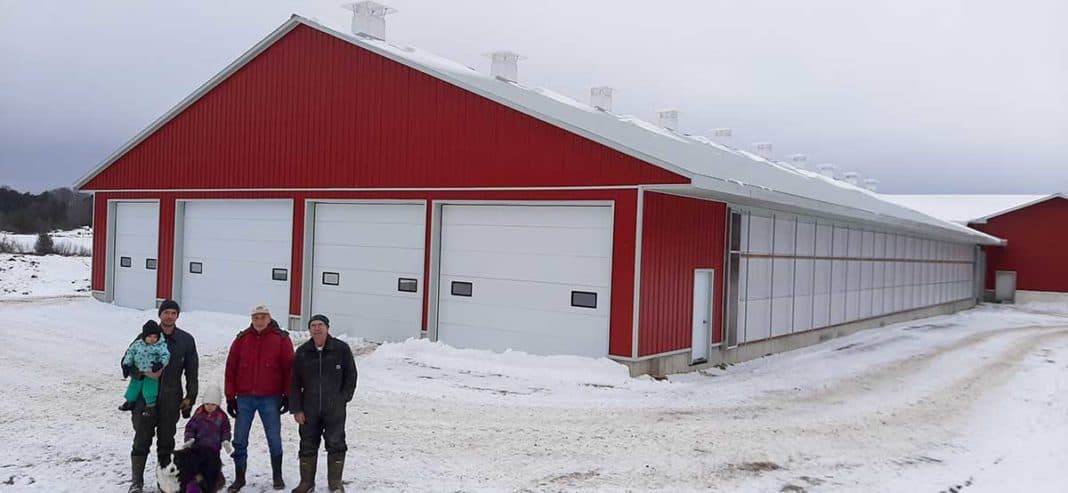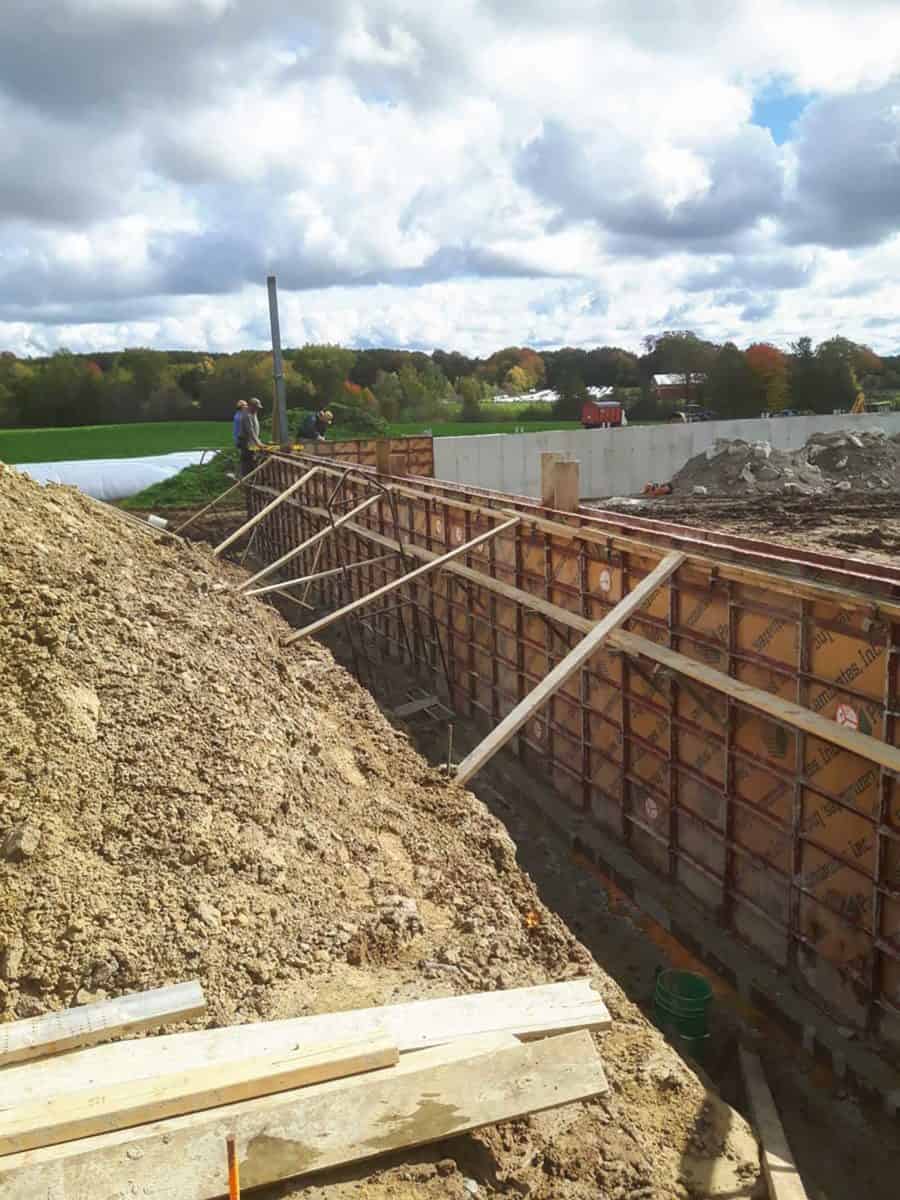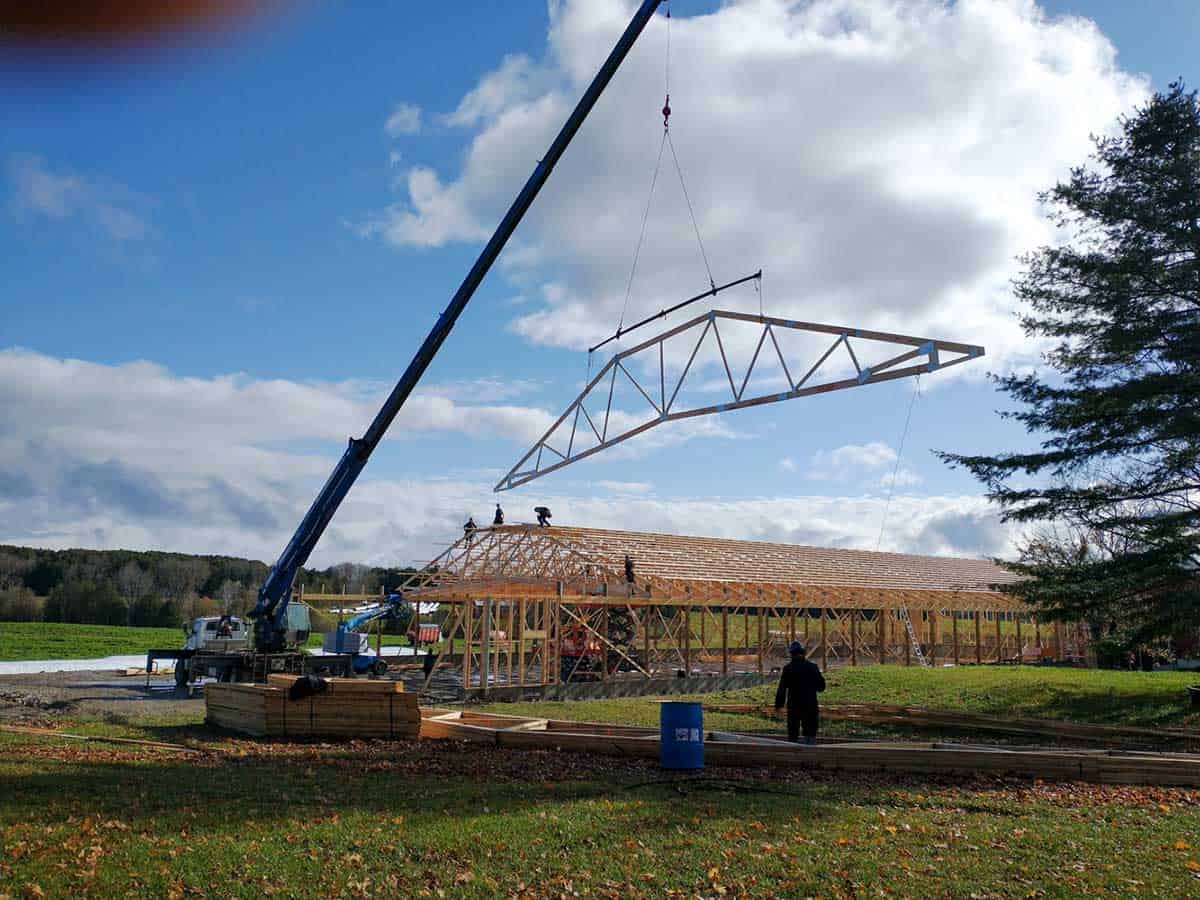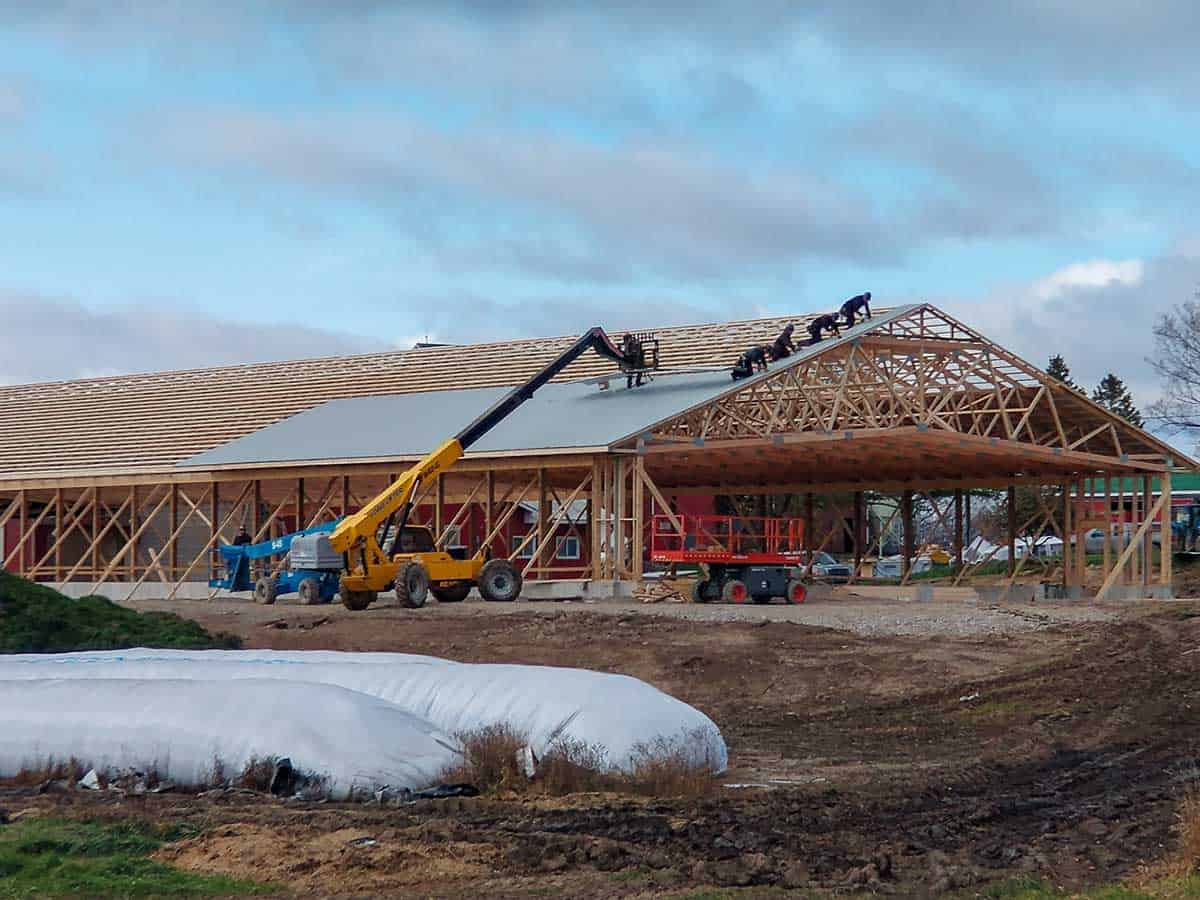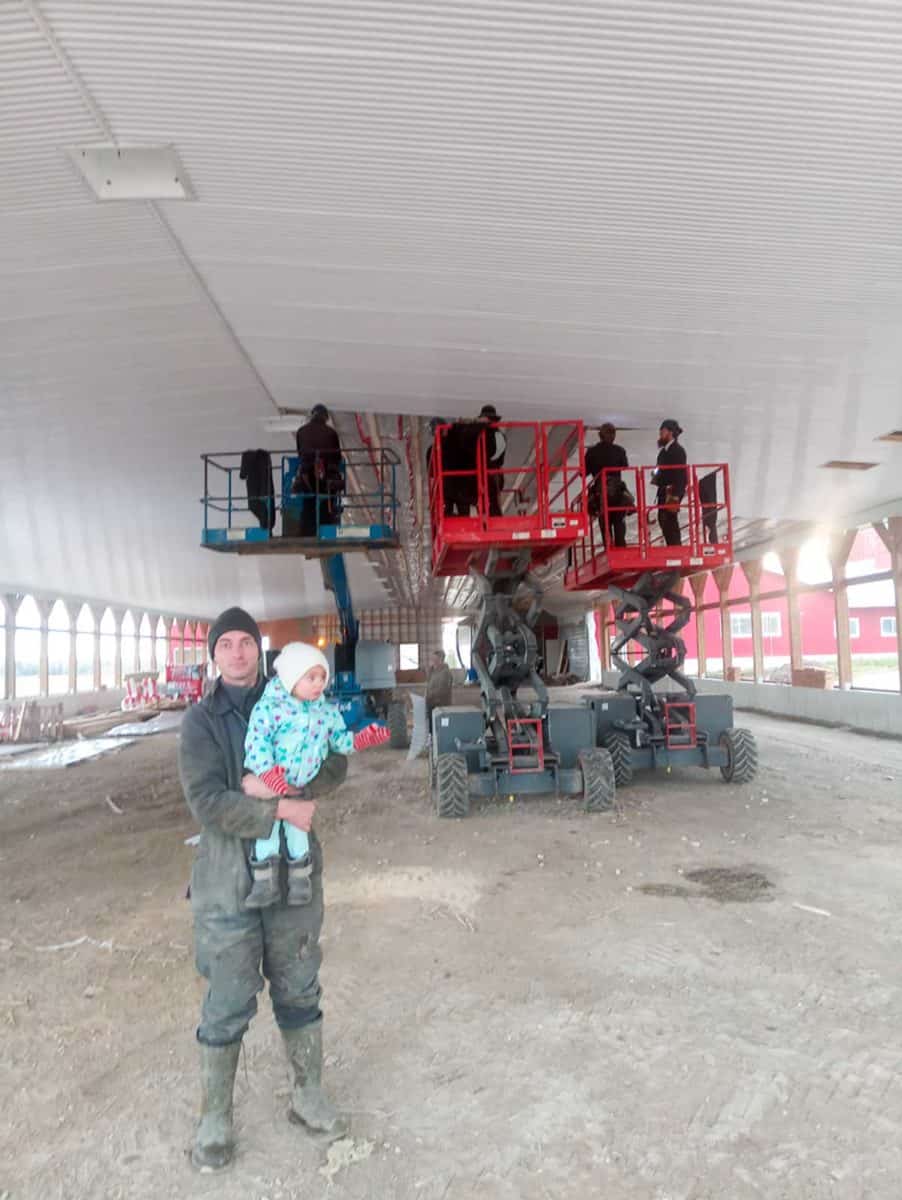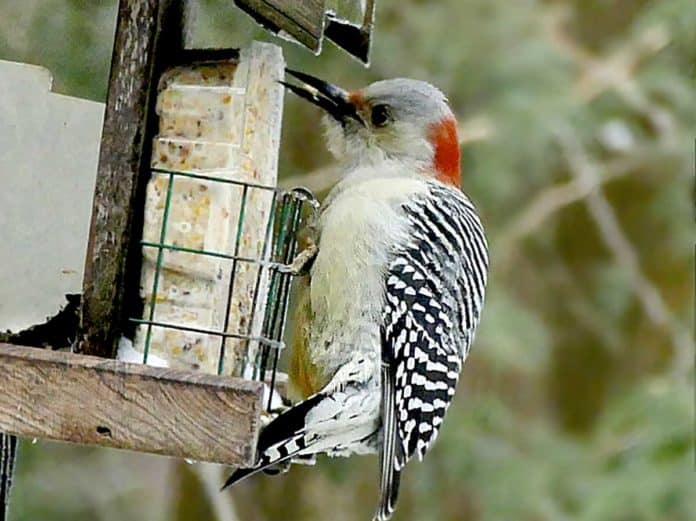A nice new red barn
TEHKUMMAH – Oshadenah Holsteins is preparing to inaugurate a 14,980-square-foot addition to improve cow housing in a free-stall dairy barn, the latest phase in a multi-year plan to improve operations at the award-winning dairy farm in Tehkummah.
“It’s pretty satisfying to see something you’ve worked hard at to get all planned out finally in a visible form,” said Alex Anstice, who manages the operation.
The idea of expansion first emerged about three years ago. Mr. Anstice consulted with a dairy housing designer on ways that he could make his cattle even more comfortable and ensure that he still outputs high-quality milk.
They decided to split the resulting plan into a couple of sections. The 2019 project focused on expanding the manure lagoon and 2020 saw the construction of the new barn, which is 214 by 70 feet in size.
The bulk of the construction ended in December 2020 after about three months of steady work from Manitoulin’s Amish builders. It should be fully operational by the summer of 2021 after some finishing touches before then.
“This winter we’re going to be finishing up some insulation in the ceiling, some electrical work and other things like that. We’ll start as soon as we can in the spring with interior cement work,” Mr. Anstice said.
The new structure will tie into the existing barn, which is contributing to the winter slowdown. Crews would have to take down the adjoining wall to open up the space, which would make conditions too cold for the animals over the winter.
The new structure will support future growth in its cow capacity (room for 82 up from the current milking stock of 50) but its real benefits will come in the animal welfare category.
The structure will be a free-stall setup, meaning cows can walk in the open space and find places to lay down and eat. There will also be sand bedding in the stalls, which is understood to be the most comfortable way to house a cow for health and welfare.
“I think the improvements should translate into more milk production, healthier cows that last longer,” Mr. Anstice said. “The sand will also offer more traction on the cement floors to help them getting around.”
An expansion and renovation also offers an opportunity to increase efficiency. New automated systems will include a robotic feed pusher and improvements at the milking parlour to manage cow handling at milking time. There will also be efficient LED lighting inside and the side curtain wall is programmed to raise and lower automatically based on temperature. Overhead fans will ensure the air moves on still days.
“It’s a large undertaking and we’ll be paying for it for a long time, but that’s just how it is as a farmer. You get used to being in debt and just know that it’s a future investment in the business,” he said.
When the new building is in operation, the old barn will become a straw pen for dry cows that have finished lactation.
Lloyd Albrecht has been a massive help, said Mr. Anstice. He has served as the general contractor (and also worked on the manure lagoon last summer) and led the cement work for the project. A half-dozen of Mr. Albrecht’s relatives in the Poplar area built the frame of the building.
“They’ve built dairy barns before and you can tell, because they sure know what they’re doing. They’re very quick and we’re very happy to work with them,” Mr. Anstice said.
Supporting the local economy was an important consideration for this build.
“I’ve had to get local excavation, local electricians and all that stuff that goes along with building,” he said. “Keeping dairy farms in small communities all around the province are highly beneficial to all small businesses to keep things running and stimulate the economy.”
He added his view that current quota systems enable small-scale milk producers, such as his farm, to keep their operations viable and support their home communities.
Mr. Anstice is the fourth generation born on the farm and his own children, especially his oldest daughter, have expressed interest in agriculture. His father Jim and grandfather Ron remain active on the farm.

